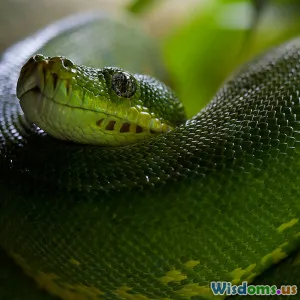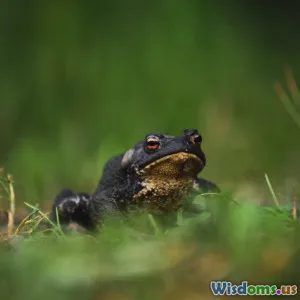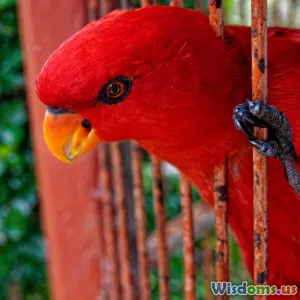
The Impact of Environment on Evolution
7 min read Explore how environmental factors shape animal evolution, driving adaptations and biodiversity across ecosystems. (0 Reviews)
The Impact of Environment on Evolution
Evolution is often portrayed as a slow, inevitable process driven solely by random genetic mutations and natural selection. But a deeper look reveals one force playing a pivotal role in shaping the course of life's history: the environment. From the scorching deserts to lush rainforests, the environment exerts constant pressures and opportunities that drive evolutionary change in the animal kingdom. This article explores how environmental factors influence evolution, fostering incredible adaptations and shaping biodiversity.
Introduction
Imagine an animal species stranded on an isolated island with limited food sources and new predators. Suddenly, the pressures of survival push the species toward dramatic changes—smaller size, altered feeding habits, or unique camouflaging abilities. This transformation isn’t random; it's a biological response to the environment imposing constraints and possibilities. The relationship between environment and evolution reflects an ongoing dialogue where life adapts to ever-changing physical and ecological settings.
Environmental Pressures: The Catalysts of Evolution
Evolution cannot be understood without examining the environmental conditions animals live in. Factors such as climate, terrain, food availability, predators, and competition collectively craft the natural selection pressures that determine survival and reproduction success.
Climate and Adaptation
Temperature extremes and climate variability often dictate physical and behavioral adaptations. For instance, the thick fur of Arctic foxes enables survival in sub-zero temperatures, while desert reptiles often develop nocturnal habits to avoid daytime heat.
A classic example is the peppered moth (Biston betularia) during the Industrial Revolution in England. Before pollution darkened tree barks with soot, the moths’ lighter coloration camouflaged them against predators. As pollution increased, darker moths had a selective advantage, showcasing environment-driven natural selection.
Habitat and Morphological Changes
The type of habitat influences morphology deeply. Aquatic environments compel streamlined bodies for efficient movement, seen in dolphins and fish alike. Conversely, arboreal animals like gibbons evolved elongated limbs for brachiation, enabling faster movement through trees.
In the Galápagos Islands, Darwin’s finches display diverse beak shapes tailored to their specific island habitats and food sources, from cracking seeds to probing flowers. This evolutionary divergence directly results from different island environments.
Predation and Defensive Strategies
Predator-prey dynamics shape evolutionary outcomes vividly. Animals develop defensive traits based on predation pressure—shells, toxins, camouflage, and behaviors.
The porcupine exhibits quills as a physical defense. Meanwhile, the poison dart frog produces potent toxins, demonstrating chemical defense directly linked to the ecological context where predation risks are high.
Food Availability and Dietary Evolution
Variability in food resources pushes species to evolve specialized feeding structures or digestive systems. The long neck of giraffes is an evolutionary response to browsing on tall foliage inaccessible to other herbivores, thus exploiting a niche food source.
Carnivores like the cheetah possess adaptations in speed and energy metabolism to capitalize on ephemeral prey.
Real-World Insights: Cases Where Environment Shaped Evolution
Cichlid Fishes in African Lakes
Cichlids in the Great Lakes of Africa offer a striking example of rapid evolutionary diversification driven by environmental factors. Lake Victoria alone hosts hundreds of cichlid species evolved from a common ancestor within a few thousand years. Differences in water clarity, depth, and food types explain this incredible speciation, as fish adapted to specific niches.
The Peppered Moth Example Revisited
The peppered moth's color variation during industrial pollution was documented extensively by Bernard Kettlewell in the 1950s. Post-industrial cleanup efforts led to a resurgence of the lighter-colored moths as trees regained their original colors, illustrating the reversible effect of environmental changes on evolutionary trajectories.
Arctic and Antarctic Species
The polar bear (Ursus maritimus) evolved from brown bears approximately 400,000 years ago, driven by the demanding arctic environment. Changes in fur density, fat storage, and hunting behaviors for seals helped polar bears adapt to ice-covered habitats and frigid marine food chains.
Similarly, Antarctic penguins have evolved specialized insulation and swimming adaptations enabling them to thrive in freezing temperatures and aquatic environments.
The Environment as a Dynamic and Multi-Faceted Influence
It is crucial to understand that the environment is not static—it fluctuates with seasons, geological events, and climate change—and so does evolutionary pressure.
For example, rapid climate change today is forcing many species to either adapt quickly, migrate to favorable areas, or face extinction. The recent shifts in bird migration patterns and plant flowering schedules highlight ongoing environmental influence on evolution.
Conclusion
The impact of environment on evolution is profound and undeniable. Environmental pressures shape species’ physical forms, behaviors, and survival strategies, creating the vast diversity we observe in the animal kingdom today. Through specific examples like Darwin's finches, cichlid fish, and the peppered moth, we see evolution in action as an ever-adapting conversation between life and its surroundings.
Understanding this interplay is vital, especially now, as human-induced environmental changes threaten natural evolutionary balances. Protecting habitats and mitigating climate change can preserve the evolutionary potential of countless species, securing biodiversity for future generations.
In essence, evolution is a story co-authored by genes and environments—a biological narrative that continues to unfold in every corner of the planet.
“It is not the strongest of the species that survive, nor the most intelligent, but the one most responsive to change.” – Charles Darwin
Rate the Post
User Reviews
Popular Posts




















